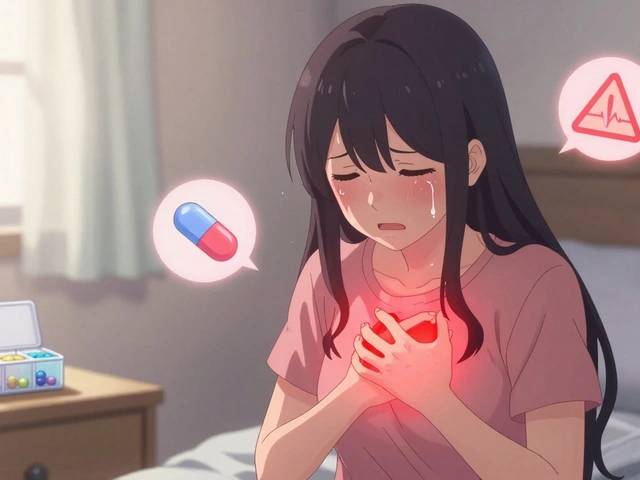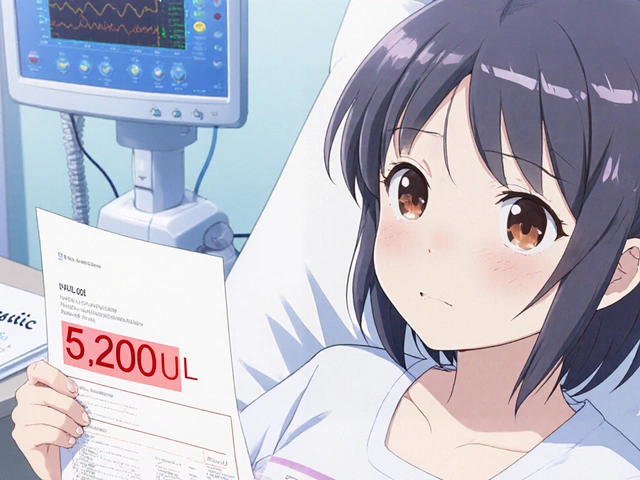Levothyroxine & Iron Timing Calculator
Get Your Optimal Timing
Enter the times you take your levothyroxine and iron supplements to see if you're meeting the recommended 4-hour separation.
Important: A minimum 4-hour separation is required between levothyroxine and iron to prevent reduced absorption.
If you're taking levothyroxine for hypothyroidism and also need iron supplements for anemia, you're not alone. About 28% of people on thyroid medication also take iron. But here’s the problem: if you take them together, your thyroid medicine might not work. Iron binds to levothyroxine in your gut, forming a complex your body can’t absorb. That means your TSH levels can spike, leaving you tired, gaining weight, and feeling cold-even if you’re taking your pills exactly as prescribed.
Why Iron and Levothyroxine Don’t Mix
Levothyroxine is a synthetic version of the thyroid hormone T4. It’s absorbed in the upper part of your small intestine. Iron supplements, especially ferrous sulfate (the most common kind), release positively charged iron ions (Fe2+ and Fe3+) in your stomach. These ions latch onto levothyroxine molecules like magnets, creating an insoluble compound that just passes through your system unused. Studies show this can cut levothyroxine absorption by 20% to 39%. One 2017 study in Thyroid found that patients who took both at the same time had up to 39% less thyroid hormone in their blood. That’s not a small drop-it’s enough to push your TSH from a normal 2.0 to a concerning 7.0, which is a clear sign your thyroid isn’t getting the support it needs. This isn’t just theory. A 2025 audit at a UK NHS hospital found that 84% of patients on both medications were taking them together, with no time gap. Their TSH levels were consistently out of range. Once they adjusted the timing, 89% got back into target range within two months.How Long Should You Wait?
The standard advice from major medical groups is clear: wait at least four hours between levothyroxine and iron. - The British National Formulary (BNF 2024) says: separate by at least four hours. - The NICE guidelines (NG145, 2023) specify four hours between levothyroxine and ferrous sulfate. - Synthroid’s official prescribing info (AbbVie, 2024) says: take iron at least four hours before or after your thyroid pill. - MedlinePlus (NIH) and GoodRx both back the four-hour window. Some sources, like Thyroid UK, suggest two hours might be enough. But that’s risky. Why? Because everyone’s gut moves differently. If you have celiac disease, IBD, or even just slow digestion, your body might hold onto both drugs longer. Four hours gives you a safety buffer. A 2022 study in the Journal of General Internal Medicine tracked over 300 patients. Those who stuck to a four-hour gap maintained normal TSH levels 89% of the time. Those who didn’t? Only 62% stayed in range.When to Take Each One
The key is to separate them-and make it easy to remember. Option 1: Morning Routine - Take levothyroxine first thing in the morning, on an empty stomach, with a full glass of water. - Wait 30 to 60 minutes before eating or drinking anything else (coffee, juice, even milk can interfere). - Take your iron supplement at lunchtime, around 12:00 to 1:00 PM. This works well if you’re not nauseous from iron. But if iron makes you feel sick, you might need food with it. That’s okay-just don’t eat anything 30-60 minutes before your thyroid pill. Option 2: Bedtime Strategy - Take levothyroxine at bedtime, at least 3-4 hours after your last meal. - Take your iron supplement in the morning, with breakfast or lunch. This is the top choice for people who struggle with timing. A 2024 survey by the Thyroid Patient Advocacy Group found that 58% of users who switched to bedtime levothyroxine said it was “easier to maintain consistently.” Plus, you avoid the rush of morning routines. Important: If you take iron with food, avoid calcium-rich foods (dairy, fortified cereals) and high-fiber meals. They can also block absorption.
Iron Formulations Matter
Not all iron supplements are the same. Ferrous sulfate is the cheapest and most common, but it’s also the worst offender when it comes to binding with levothyroxine. Ferrous gluconate and ferrous fumarate cause slightly less interference. Still, you can’t skip the four-hour gap. Even these forms bind enough to matter. Newer options are coming. PharmacoLever’s experimental “ThyroSafe Iron,” a chelated form, showed 87% less binding in early trials. But it’s not on the market yet. For now, stick with what’s available-and time it right.What If You Forget?
Life happens. You take your iron at 8 AM, then realize you forgot your thyroid pill. Or you take levothyroxine at 6 AM, then grab an iron tablet at 9 AM because you’re running late. If you’re within two hours of your scheduled dose, skip the iron and wait until the next day. Don’t double up. If it’s been more than four hours, it’s fine. But don’t make this a habit. If you take both within two hours, your absorption drops. You won’t feel it right away, but your TSH will creep up over weeks. That’s why monitoring matters.Watch for Signs Your Thyroid Isn’t Working
Even with perfect timing, starting iron can throw off your thyroid balance. Your body might need a small dose adjustment. Watch for these symptoms:- Unexplained fatigue, even after sleeping
- Weight gain without changes in diet
- Feeling colder than usual
- Dry skin or hair loss
- Depression or brain fog

Why This Is Hard-and How to Make It Easier
The biggest reason people fail? Convenience. A 2023 survey by the American Thyroid Association found that 41% of people over 65 found the four-hour rule “difficult to maintain.” Iron causes nausea in 65% of users, so they take it with food. But that often means taking it too close to levothyroxine. Here’s how to fix it:- Use phone alarms. Set one for levothyroxine and another for iron. Label them clearly.
- Take iron with vitamin C. A glass of orange juice or a 500 mg vitamin C tablet boosts iron absorption. That means you can take a lower dose of iron, reducing side effects.
- Try slow-release iron. Brands like Slow Fe or Ferro-Grad C reduce stomach upset. But they still bind to levothyroxine-timing still matters.
- Use a pill organizer. Separate your thyroid pills from your iron. Put them in different compartments.
- Download a tracker. The American Thyroid Association’s mobile app and Thyroid UK’s “Medication Timing Chart” let you log doses and see patterns.
What Your Doctor Should Tell You
Here’s the scary part: only 37% of primary care doctors consistently counsel patients on this interaction, according to a 2024 JAMA Internal Medicine study. You need to be your own advocate. Ask your doctor:- “What form of iron are you prescribing?”
- “Should I take my thyroid pill in the morning or at night?”
- “When should I schedule my next TSH test after starting iron?”







